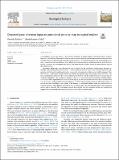Distorted gaze direction input to the attentional priority map in spatial neglect
Abstract
A contribution of gaze signals to the attention imbalance in spatial neglect is presumed. Direct evidence however, is still lacking. Theoretical models for spatial attention posit an internal representation of locations that are selected in the competition for neural processing resources – an attentional priority map. Following up on our recent research showing an imbalance in the allocation of attention after an oculoproprioceptive perturbation in healthy volunteers, we investigated here whether the lesion in spatial neglect distorts the gaze direction input to this representation. Information about one’s own direction of gaze is critical for the coordinate transformation between retinotopic and hand proprioceptive locations. To assess the gaze direction input to the attentional priority map, patients with left spatial neglect performed a cross-modal attention task in their normal, right hemispace. They discriminated visual targets whose location was cued by the patient’s right index finger hidden from view. The locus of attention in response to the cue was defined as the location with the largest decrease in reaction time for visual discrimination in the presence vs. absence of the cue. In two control groups consisting of healthy elderly and patients with a right hemisphere lesion without neglect, the loci of attention were at the exact location of the cues. In contrast, neglect patients allocated attention at 0.5⁰-2⁰ rightward of the finger for all tested locations. A control task using reaching to visual targets in the absence of visual hand feedback ruled out a general error in visual localization. These findings demonstrate that in spatial neglect the gaze direction input to the attentional priority map is distorted. This observation supports the emerging view that attention and gaze are coupled and suggests that interventions that target gaze signals could alleviate spatial neglect.
Citation
Balslev , D & Odoj , B 2019 , ' Distorted gaze direction input to the attentional priority map in spatial neglect ' , Neuropsychologia , vol. 131 , pp. 119-128 . https://doi.org/10.1016/j.neuropsychologia.2019.05.017
Publication
Neuropsychologia
Status
Peer reviewed
ISSN
0028-3932Type
Journal article
Description
This work was supported by the Danish Medical Research Councils [grant number 09–072209] and an Institutional Strategic Support Fund at the University of St Andrews from the Wellcome Trust.Collections
Items in the St Andrews Research Repository are protected by copyright, with all rights reserved, unless otherwise indicated.

